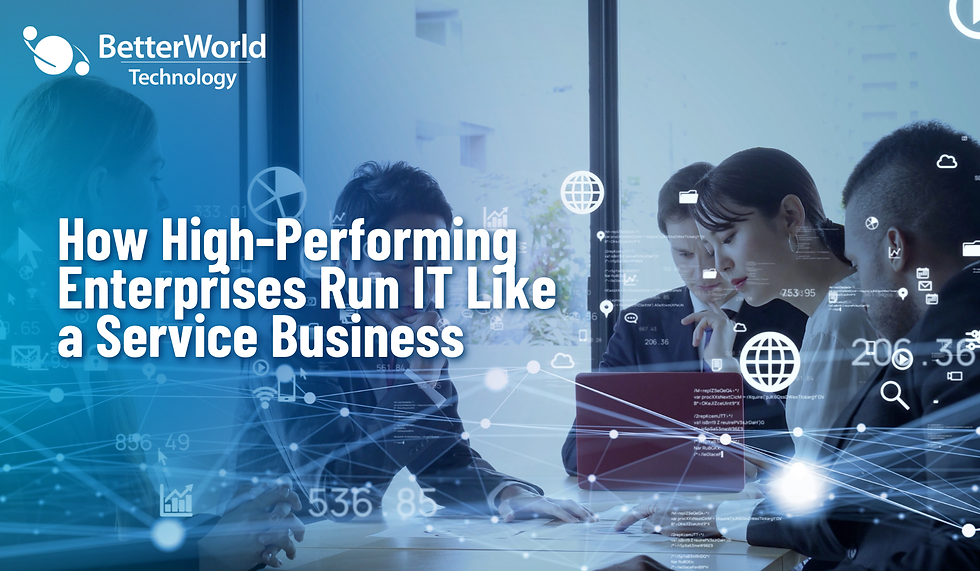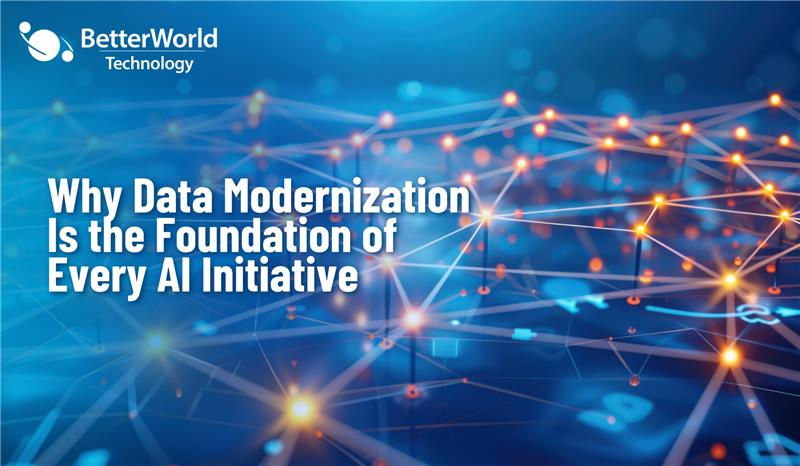5 Strategies To Maximize ROI from Your IT Assets with Effective Management
- John Jordan

- Jun 15, 2023
- 7 min read
Updated: Jul 2, 2024
In today's technology-driven world, businesses heavily rely on their IT assets to drive productivity, efficiency, and overall success. However, merely investing in IT infrastructure is not enough to achieve the desired outcomes. Effective management is crucial to maximizing these assets' return on investment (ROI). This article will explore the key strategies and practices that can help businesses extract the most value from their IT assets while optimizing costs and mitigating risks.

Understanding IT Assets and Maximize ROI
IT assets encompass a wide range of resources, including hardware, software, networks, databases, and applications. These assets enable organizations to store, process, and transmit data, facilitate communication, and support various business functions. Recognizing the diverse nature of IT assets is fundamental in understanding their potential for driving ROI.
ROI, or return on investment, is a metric used to assess the profitability of an investment relative to its cost. When it comes to IT assets, ROI goes beyond monetary gains and includes factors such as increased efficiency, improved customer satisfaction, and enhanced competitive advantage. A high ROI indicates that the IT assets are delivering significant value to the organization.
Importance of Effective IT Asset Management
Effective IT asset management plays a pivotal role in maximizing ROI. By strategically managing IT assets throughout their lifecycle, businesses can optimize their utilization, minimize downtime, reduce maintenance costs, and make informed decisions about upgrades or replacements. Moreover, proper asset management ensures compliance with regulations, minimizes security risks, and enhances overall operational efficiency.

Key Elements of Effective IT Asset Management
To achieve optimal ROI from IT assets, businesses must focus on the following key elements of effective management:
1. Inventory Management
Maintaining an accurate inventory of IT assets is essential for effective management. This involves documenting details such as asset specifications, ownership, location, and usage. Regular audits and assessments help identify discrepancies, eliminate redundancies, and improve overall asset visibility.
2. Asset Lifecycle Management
Managing IT assets throughout their lifecycle involves planning, procurement, deployment, maintenance, and retirement. By adopting a proactive approach, organizations can optimize asset utilization, plan for upgrades or replacements, and minimize associated costs.
3. Risk Assessment and Mitigation
Identifying and mitigating risks associated with IT assets is crucial for safeguarding business operations. Conducting regular risk assessments helps identify vulnerabilities and implement appropriate measures to enhance security, protect sensitive data, and ensure compliance with regulations.
4. Compliance and Security Measures
Compliance with industry standards and regulations is vital to effective IT asset management. Implementing robust security measures, such as firewalls, encryption, and access controls, helps protect assets from cyber threats and potential data breaches.
5. Budgeting and Cost Optimization
Strategic budgeting and cost optimization are essential for maximizing ROI. Businesses can make informed decisions that align IT investments with organizational goals by analyzing asset lifecycles, conducting thorough cost-benefit analyses, and exploring alternative solutions.
Maximizing ROI through IT Asset Management
1. Enhancing Efficiency and Productivity
Efficient IT asset management improves operational efficiency and employee productivity. Businesses can minimize downtime, streamline workflows, and empower their workforce to deliver optimal results by ensuring the right tools and resources are available.
2. Reducing Downtime and Maintenance Costs
Proactive asset management reduces the risk of unexpected failures and costly downtime. Regular maintenance, timely upgrades, and swift issue resolution help minimize disruptions, extend asset lifecycles, and reduce overall maintenance expenses.
3. Streamlining IT Procurement
By gaining visibility into IT assets, businesses can identify opportunities for consolidation and standardization. Streamlining IT procurement processes allows organizations to negotiate better contracts, optimize licensing, and leverage economies of scale, resulting in cost savings.
4. Identifying Redundancies and Eliminating Waste
Effective asset management enables organizations to identify redundant or underutilized assets. By eliminating waste and reallocating resources, businesses can optimize asset utilization, reduce unnecessary expenses, and redirect investments to areas that deliver higher ROI.
5. Leveraging Data Analytics for Decision-Making
Data analytics provides valuable insights into asset performance, usage patterns, and future requirements. By leveraging analytics tools and techniques, businesses can make data-driven decisions about asset investments, upgrades, and replacements, ultimately maximizing ROI.
Strategies for Effective IT Asset Management
1. Implementing a Comprehensive Asset Management System
Investing in a comprehensive asset management system provides businesses with the tools and processes needed to manage IT assets effectively. Such systems enable organizations to track assets, automate workflows, generate reports, and streamline asset-related activities.
2. Conducting Regular Audits and Assessments
Regular audits and assessments help identify discrepancies, ensure compliance, and improve asset visibility. By conducting these activities on a scheduled basis, businesses can proactively address issues and make informed decisions regarding asset optimization and risk mitigation.
3. Adopting Best Practices for Risk Mitigation
Effective risk mitigation strategies include implementing security controls, conducting penetration testing, and providing employee training on cybersecurity best practices. By adopting a proactive approach to risk management, organizations can safeguard their IT assets and reduce the likelihood of costly security breaches.
4. Emphasizing Training and Education
Investing in employee training and education programs fosters a culture of IT asset management and security awareness. By equipping employees with the knowledge and skills needed to handle assets responsibly, businesses can reduce human errors, enhance compliance, and improve overall asset performance.
5. Leveraging Automation and AI Technologies
Automation and artificial intelligence (AI) technologies streamline asset management processes, improve efficiency, and reduce manual errors. Adopting solutions such as asset discovery tools, automated inventory management systems, and AI-powered analytics enhances accuracy, saves time, and allows for proactive decision-making.
Challenges in IT Asset Management and ROI Maximization

1. Complex IT Environments
Modern IT environments are complex, consisting of diverse assets spread across multiple locations and platforms. Managing such complexity requires robust systems, skilled personnel, and effective coordination between different teams and departments.
2. Lack of Visibility and Control
A lack of visibility and control over IT assets hinders effective management. Without accurate asset inventories and monitoring mechanisms, businesses face challenges in optimizing asset utilization, detecting vulnerabilities, and making data-driven decisions.
3. Compliance and Security Risks
Maintaining compliance with evolving regulations and addressing security risks pose significant challenges in IT asset management. Failure to comply with industry standards can result in financial penalties and damage to a company's reputation, while security breaches can lead to data loss, legal consequences, and financial losses.
4. Budget Constraints
Limited budgets often restrict organizations from making optimal investments in IT asset management. Balancing cost considerations with the need for asset upgrades, security measures, and compliance can be challenging, potentially affecting ROI maximization.
Overcoming Challenges and Achieving Optimal Results
1. Collaboration between IT and Business Departments
Close collaboration between IT and business departments is crucial for effective IT asset management. Organizations can optimize asset utilization and achieve higher ROI by aligning IT strategies with overall business goals and involving stakeholders in decision-making processes.
2. Integration of IT Asset Management with Business Strategies
Integrating IT asset management with broader business strategies ensures that asset decisions align with organizational objectives. Businesses can make informed investments and maximize long-term ROI by considering asset performance, risks, and lifecycle costs in strategic planning.
3. Engaging External IT Asset Management Experts
Organizations may benefit from partnering with external IT asset management experts in certain cases. These experts bring specialized knowledge, experience, and tools that can help businesses overcome challenges, implement best practices, and achieve optimal results in managing their IT assets.
4. Continuous Improvement and Adaptation
IT asset management is an ongoing process that requires continuous improvement and adaptation. Regularly reassessing strategies, leveraging emerging technologies, and staying updated on industry trends ensure that businesses remain agile, proactive, and capable of maximizing ROI.
Future Trends in IT Asset Management and ROI Maximization
1. Cloud Computing and Virtualization
The increasing adoption of cloud computing and virtualization technologies presents new opportunities for IT asset management. These technologies offer flexible and scalable solutions, enabling businesses to optimize asset usage, streamline maintenance, and reduce costs.
2. Internet of Things (IoT)
The proliferation of IoT devices introduces new challenges and opportunities in IT asset management. Proper management of IoT assets, including monitoring, security, and data analysis, will be critical for organizations to maximize ROI and harness the full potential of IoT technologies.
3. Artificial Intelligence (AI) and Machine Learning (ML)
AI and ML technologies are revolutionizing IT asset management. These technologies enable predictive analytics, automate routine tasks, and enhance decision-making processes. By leveraging AI and ML, businesses can optimize asset performance, detect anomalies, and achieve higher ROI.
4. Blockchain Technology
Blockchain technology has the potential to transform IT asset management by providing transparent, immutable, and decentralized asset tracking. The use of blockchain can enhance asset security, streamline transactions, and improve trust between stakeholders, leading to improved ROI.

Maximizing ROI from IT assets requires effective management strategies that encompass inventory management, asset lifecycle management, risk assessment, compliance measures, and cost optimization. Businesses can achieve higher returns on their IT investments by enhancing efficiency, reducing downtime, streamlining procurement, identifying redundancies, and leveraging data analytics. Overcoming challenges through collaboration, integration, external expertise, and continuous improvement is crucial for optimal results. Emerging technologies like cloud computing, IoT, AI/ML, and blockchain will further shape IT asset management practices, presenting new avenues for ROI maximization.
FAQs
1. Why is effective IT asset management important for maximizing ROI?
Effective IT asset management ensures optimal utilization, reduces downtime and maintenance costs, enhances security and compliance, and facilitates data-driven decision-making, all of which contribute to maximizing ROI.
2. How can businesses streamline their IT procurement processes?
By gaining visibility into IT assets, organizations can identify opportunities for consolidation and standardization and negotiate better contracts. This, in turn, streamlines IT procurement, reduces costs, and enhances ROI.
3. What are the challenges in IT asset management and ROI maximization?
Challenges include complex IT environments, lack of visibility and control, compliance and security risks, and budget constraints. Overcoming these challenges requires strategic collaboration, integration, external expertise, and continuous improvement.
4. How can businesses leverage data analytics to maximize ROI?
Data analytics provides valuable insights into asset performance, usage patterns, and future requirements. By leveraging analytics tools and techniques, businesses can make data-driven decisions about asset investments, upgrades, and replacements, ultimately maximizing ROI.
5. What are some future trends in IT asset management?
Future trends include the increased adoption of cloud computing, virtualization, IoT devices, AI/ML technologies, and blockchain. These technologies will shape asset management practices and provide new avenues for ROI maximization.









